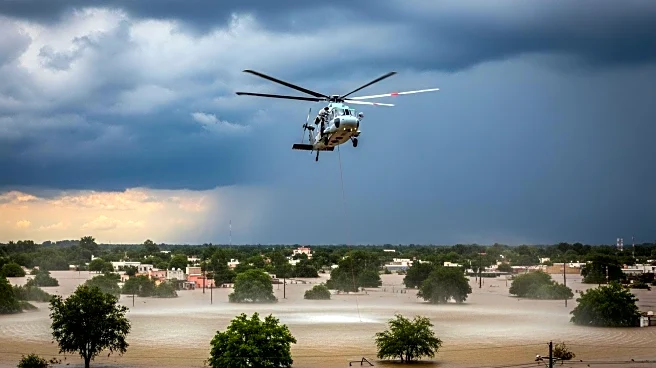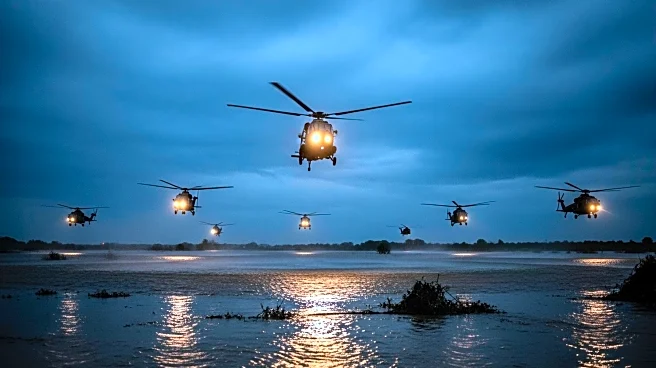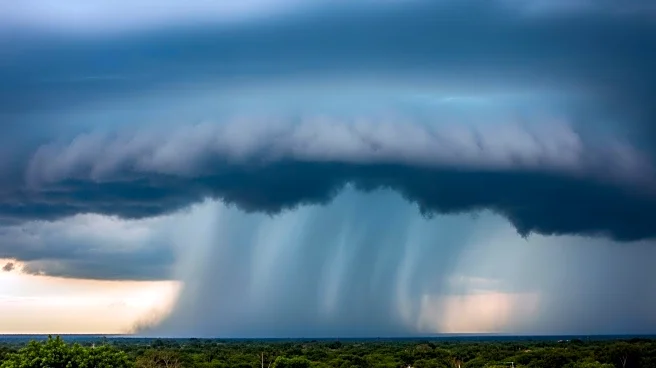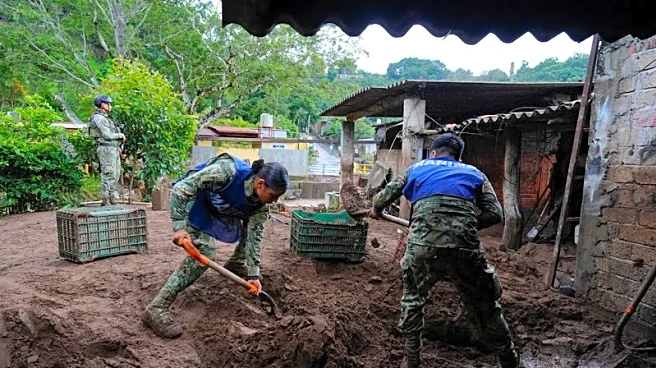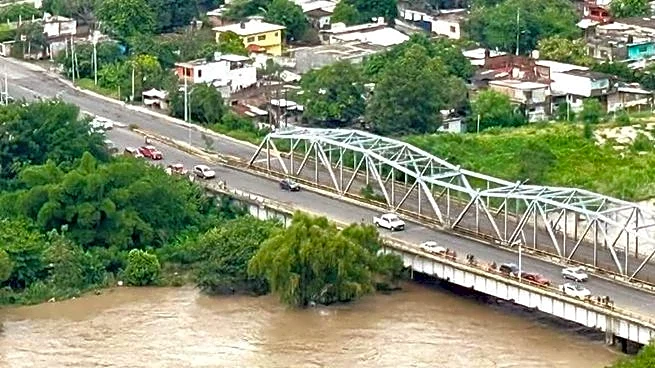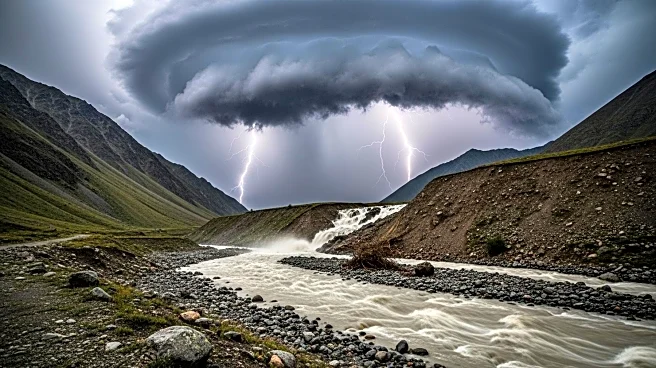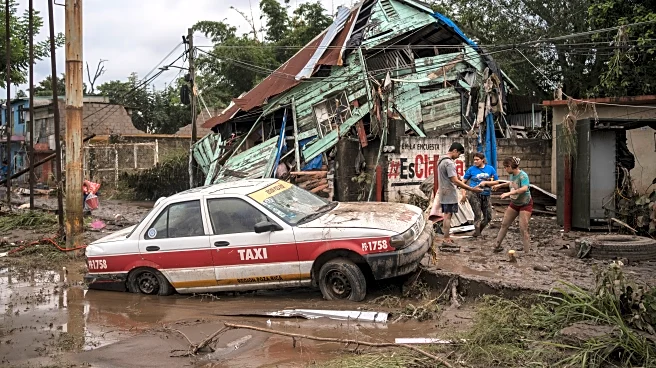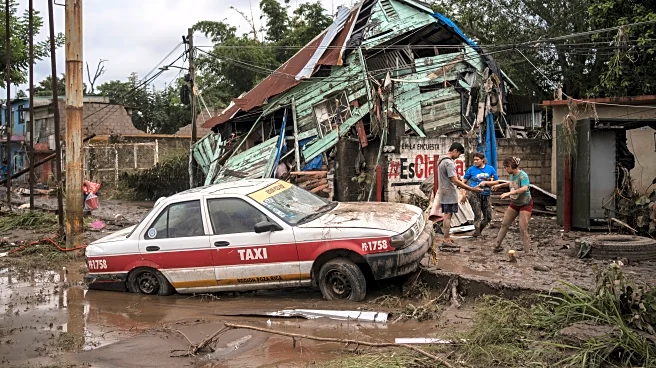What's Happening?
Mexico is grappling with severe flooding caused by torrential rains, resulting in the deaths of 64 people across five states. The floods have left 65 individuals missing and damaged approximately 100,000 homes. In Poza Rica, an oil town, the flooding has also led to oil residue streaking walls, complicating cleanup efforts. President Claudia Sheinbaum has deployed 10,000 troops and civilian rescue teams to assist affected areas, with helicopters delivering food and water to isolated communities. The heavy rains, attributed to two tropical systems, have particularly impacted Veracruz, Hidalgo, and Puebla states.
Why It's Important?
The flooding in Mexico highlights the vulnerability of regions to extreme weather events, exacerbated by climate change. The disaster has significant implications for public safety and infrastructure resilience, as well as the environmental impact of oil contamination in floodwaters. The deployment of troops underscores the severity of the situation and the need for coordinated emergency response efforts. The event also raises questions about preparedness and the effectiveness of early warning systems in mitigating such disasters.
What's Next?
Authorities continue to work on establishing access to isolated areas, with ongoing efforts to deliver essential supplies. The cleanup process is complicated by oil deposits, and Pemex's role in managing oil spills will be scrutinized. President Sheinbaum has assured that resources will not be skimped during the emergency period. The focus will be on recovery and rebuilding efforts, as well as assessing the long-term environmental impact of the flooding.
Beyond the Headlines
The flooding disaster in Mexico may prompt discussions on climate adaptation strategies and the need for improved infrastructure to withstand extreme weather events. The oil contamination adds a layer of complexity, highlighting the intersection of industrial activities and environmental vulnerabilities. This event could lead to policy changes regarding disaster preparedness and response, as well as environmental regulations concerning oil management.
